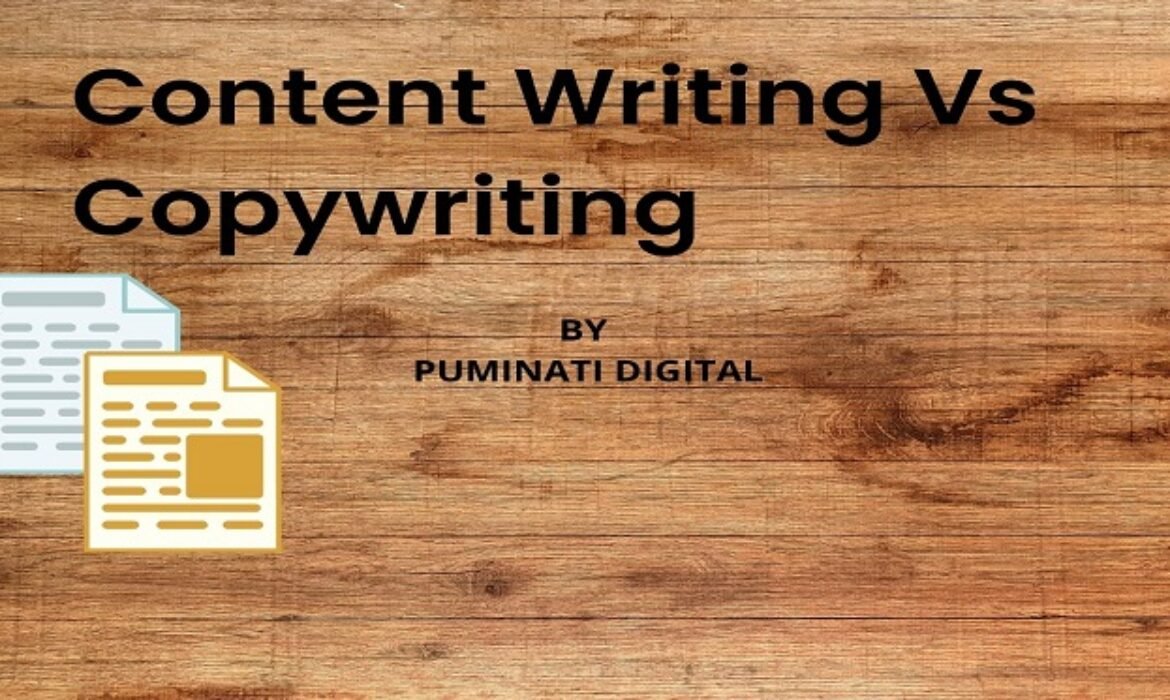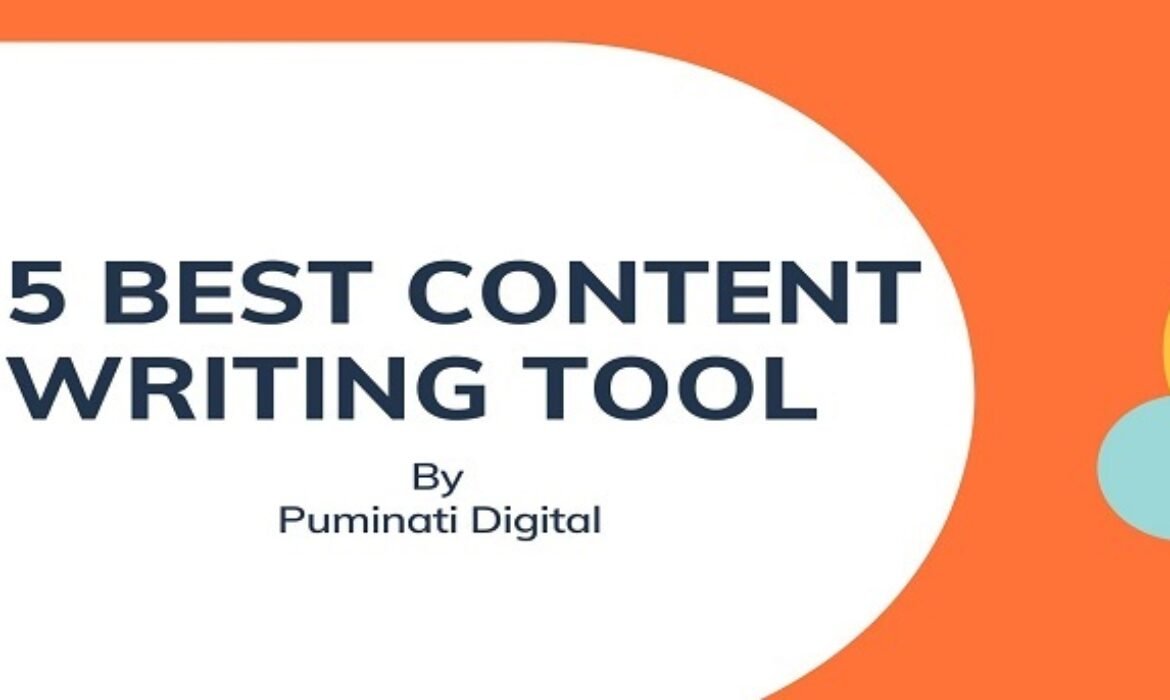5 Tips for Content Optimization for Every Social Media Platform

It may be simple to promote and advertise on social media, whether for social media shopping or to boost a political campaign. But, are your postings and campaigns effective? That is the tough part about social media marketing. What appears to you to be a brilliant and intriguing piece may not be appealing to your target audience.
A successful social media campaign is an art form. You must consider content genres, message, tone, and visuals. It would be best if you learned how to create marketing personas in order to capture the attention of the appropriate individuals on the right platform at the right moment. We’ll look at eight basic yet effective strategies to generate amazing content for every social platform in this article.
Today at Puminati Digital we will be telling you about 5 Tips for Content Optimization for Every Social Media Platform.
Upload Short Videos
We know that customers enjoy seeing mixed media in content, but the video has shown to be a fan favorite. Marketers that employ video in their marketing campaigns obtain 66% more qualified leads per year than those who do not. A brief video not only has a higher possibility of being eaten during a social media scan, but it also takes less time to make and upload and does not require the services of a professional.
Live video is available on Facebook, Twitter, Instagram, Twitch, and TikTok. Instagram, in particular, provides a wide range of video formats. Short videos are an excellent method to engage followers and track analytics linked to your video. After the live segment of the video concludes, it is still available for watching, ensuring that people linked to your profile do not miss it.
Create Interactive Social Content
To social media crawler bots, user engagement seems to be user favor. The more likes, shares, and comments your work receives, the better it looks. Creating shareable content that encourages consumers to participate and interact boosts ranking and increases brand loyalty.
Develop Emotion and Humour
Evoking emotion humanizes your business, whether it’s through a hilarious joke or a heartfelt video. This will be especially crucial in 2022 when customers will be looking for businesses that make a statement on social problems and demonstrate a commitment to core values. Companies who engage with their audience on a deeper level, even if it is simply with a goofy GIF or meme, are more likely to receive repeat comments, likes, and shares.
User-Generated Content (UGC) always works
User-Generated Content (UGC) refers to memes, images, videos, and even screengrabs created by other users. But why is this useful as a strategy for content optimization? It catches the creator’s or the creator’s followers’ attention and engages them. UGC also capitalizes on the popularity of something that has already been created and is well-liked. This saves you the time and effort you would have spent writing your catchy content. Furthermore, because UGC is not a replica of someone else’s work, it is unique to your brand. Just make sure that any information shared is suitable and that respect is given where it is due.
Respond to Social Comments
It may appear to be a simple tactic, but reaching out to consumers via comments is a proven method. Many businesses on social media sit back and wait for customers to come to them. This should never happen. Social media is becoming a customer service channel and an important tool to engage with prospects and answer their questions.
So, reach out, comment, like, and even post relevant stuff to your brand. When other customers see you communicating, it looks nice to them, and it improves the likelihood that you’ll receive comments of your own. Once you have regarded it as one of the owner’s things there comes a chance to meet the fresh comments.
Conclusion
If you just remember one thing from this post, make it that algorithms may help rather than hinder. Some social media users see algorithms as cords that bound us to precise rules, yet they can assist you in creating material with the potential to become viral. Learning the regulations for each platform is the key to beating the competition and rising to the top.
So these were the 5 Tips for Content Optimization for Every Social Media Platform. To read more about such exciting topics related to Digital Marketing you can check out our blog section. For more information about us, you can visit our website or contact us by clicking here.
Facts about Duplicate Content

Hello Again! We at Puminati Digital are back again to discuss more on Duplicate Content. In the last blog post, we talked about the myths that revolve around Duplicate Content. In this blog post, we would be talking about some facts about Duplicate Content. Those who have missed the previous blog on the Myths About Duplicate Content please do read it once. For those of you who are here just for the facts and to know about Duplicate Content, we will summarise it for you guys.
What is Duplicate Content?
Duplicate content is material that exists in more than one location on the Internet. That “one place” is defined as a location having a unique internet address (URL); hence, if the same material occurs at more than one web address, it is considered duplicate content.
While duplicate material is not strictly a penalty, it can nonetheless have an influence on search engine results. When there are many instances of “appreciably similar” information in different locations on the Internet, search engines may struggle to determine which version is more relevant to a particular search query.
Now that you know what Duplicate Content is let us know some facts about duplicate content
Facts About Duplicate Content
Use 301 Redirects to Avoid Duplicate Content Penalties
According to a SEMrush analysis, 8.58 percent of all websites have redirect loops, therefore you must exercise caution while employing this method.
Reduce the amount of duplicate material by redirecting an old or obsolete URL to the new version. This is useful in the following situations.
- You just changed the domain name of your website.
- You’re attempting to redirect obsolete URLs after combining two websites.
- You have many URLs for your homepage and want to select one as the “canonical” one.
- You erased a page after modifying your website.
301 redirects are a simple technique to get rid of annoying duplicate material on your website.
Duplicate Content Impacts Link Equity
The term “link equity” refers to how specific links transfer authority and value from one website to another. Here’s why duplicating content is a concern if you’re seeking to earn link equity.
Because search engines do not want to display many sites with the same material, they must determine which page is the best fit. Every duplicate page diminishes visibility, reducing your link exposure. Links are important. According to Backlinko, the first Google result has 3.8 times more links than the second through tenth places.
Google suggests reducing boilerplate repetition
When we talk about “boilerplate” information, we generally mean things like copyright notices or legal disclaimers. Google may regard these standardized chunks of text to be duplicated if they exist in the main body of content.
Google has policies in place to combat such boilerplate assertions. If you utilize disclaimers, for example, you might create extremely brief legal disclaimers for each post and offer a link to a comprehensive legal policy.
One of the Best Ways to Avoid Duplicate Content Is Understanding Your CMS
Your content management system (CMS) may be producing content duplicates that you are unaware of. For example, there a single article may appear on a homepage and under a search category. How do you go about resolving this? Understanding the intricacies of your CMS. You have a few possibilities after you’ve learned how to recognize similar material.
Wherever possible, include the canonical tag. Alternatively, you may use the “Noindex” element to prevent Google from indexing the page (especially helpful for printer-friendly pages). Alternatively, you may rewrite information, even if only slightly, to keep it unique.
Conclusion-
Contrary to popular belief, duplicating material isn’t a major issue unless it’s used maliciously. Google will not penalize you with a bad search score simply because it encounters duplicate content on occasion. Having said that, it’s still worthwhile to discover and remove duplicate information. Avoid boilerplate repeats, utilize 301 redirects wherever feasible, and check to see if your CMS is producing duplicate material unnecessarily. So, these were some facts about Duplicate Content that you should know about. To know more about Puminati Digital you can visit our website or contact us. To read more interesting blogs you can head over to our blog section.
Content Writing Vs Copywriting

In today’s world, brands have shifted to a different concept of creative marketing strategies, i.e., Storytelling. This is the art of using words and actions to develop the background of the story while encouraging the audience’s imagination. it creates a background story for a brand that helps evoke emotions and awareness among the people. Storytelling is the best tool to gain people’s trust, inspire them, and make them believe in your mission.
Before you start selling a product you need to first gain the trust of the people. To do that storytelling will play an important role in building their trust. It is a two-way process and the customers need to know that you are helping them and not just selling them your products. Copywriters and Content-writers are both responsible for creating content but their roles still differ from each other. However, they both play an important role in building customer connections.
If you are a writer or you run an agency it is very important for you to know about the difference between Content Writing Vs Copywriting and how both can help you in increasing your business. Below are the 7 differences and comparisons between Content Writing Vs Copywriting.
A copywriter sells and a content writer informs
A copywriter considering a target audience writes accordingly to sell the product to that audience. A content writer writes content to educate, inform, instruct, or entertain readers. Copywriting is mainly related to sales, it can be said as an art of salesman in print. Its main purpose is to persuade people and make them believe your brand will fulfill their needs. Content-writing does all other works like it attracts audiences, solves their problems, and making a way for customers so they can make a purchase.
A copywriter creates a sense of urgency
A copywriter writes content that urges viewers to take action immediate action like they will want readers to sign up for a website, make them buy products, or simply make them download something. So, it is important for copywriters to create crisp and short content that is pleasing to the eyes and at the same time answers the ‘why’ questions of the audience. The content writers work on building and engaging the audience by providing needed information to the audience and at the same time indirectly promoting the brand.
Content Writers usually focus on the SEO
The base of content writing is Search Engine Optimisation practices. Content writers create content on the most trendy topics that the users are generally interested in. With the help of certain tools, they will research some popular keywords and accordingly write their articles or blogs. The headings, paragraphs, meta titles, and images are all inserted with keywords so that the content would rank better in the search engines. It is not necessary for copywriters to follow SEO practices, although if there are keywords present in the Ad copies it will definitely help the Ad post to rank higher and get noticed by the readers.
Copywriters write short copies while Content Writers write long content
Copywriters generally write short-length content such as online and offline Ads, taglines, slogans, Web page content, E-mail campaigns, Tv or radio commercials, video scripts, catalogs, Billboards, Postcards, jingle lyrics, etc.
Content writers on the other hand write long-form content such as Articles, blog posts, news articles, press releases, magazine articles, E-mail newsletters, E-books, books, film and television scripts, podcasts, etc.
The content writer plans a long-term strategy.
A copywriter can create Ad copies and you can tell whether it was a success or not with the help of metrics that tells you how frequently the Ad was opened. The same is not the case with content writing. Content writing is a long process and it takes a lot of time for good content to pay off. If the content is good it will rank better in the google search which will bring in more audience for a longer period of time, unlike Ad copies and advertisements. For example - An Ad or email will fade away with time but the users searching on the internet will find the blogs and articles until it is removed from the website.
The content writer drives traffic and the copywriter turns them into leads.
This last point makes the difference very clear between content writing and copywriting. Content writing plays a major role in generating traffic by writing informative and entertaining blogs and articles. Whereas, Copywriting turns those traffic into leads by making interesting and eyecatching Ad copies. So, the final verdict is that good SEO content is good for driving traffic and sales copies are good for sales.
Conclusion-
Content writer and copywriter are the two most important job titles that are associated with digital marketing agencies. There is a popular saying that we digital marketers often come upon ‘Content Is King’. Creative Marketing strategies totally depend on Content and without Content Writers and Copywriters it is not possible to achieve the set marketing goals.
So, we at Puminati Digital think that you have got a clear idea about what content writers and copywriters do. Now, if you are thinking about joining a digital agency as a writer then what according to you will be your choice of profession - Content Writer or Copywriter?
How to Do Excellent Content Research for Beginners

If you are someone who loves to create content then you would be aware of how sometimes it can be impossible to find new ideas. So, where does the inspiration come from to create new content ideas? There are times when you have a topic to write on but there are no content ideas available. So how will you generate ideas quickly that are informative and exciting? Obviously, by Content research. What do you think content research is? We are very sure you have a vague idea about it. If you are thinking - Googling about the topic, reading-related bogs, talking to an expert in a particular field, knowing the problems your audience is facing, and then trying to solve them with the help of a blog or a social media post, then you are not wrong at all.
Today, we at Puminati digital will tell you how to do excellent content research for beginners and as well as for experts who might be looking for a little help. Let us look at three easy steps on how to do effective content research.
1) Firstly, Google It!
Google is the answer to all your questions. Not just for content research, usually, people think of google first whenever they are stuck in a problem. So you should too. There are many content creators that provide content to make their websites rank on google. There are also people who believe in quality content and writing informative information. You will find tons of unlimited ideas from google. To make it more clear let us tell you how to use Google the best way.
- Know about the topic you are about to write and then google it.
- You will find many blogs and websites and you can further read as many blogs as you want and get an understanding of the topic. But don’t waste too much as you have a client deadline to meet.
- Take notes of the important points and add your own creativity to every point.
You can take help from useful websites such as Towards Data Science, Feedspot, The Startup, etc, and read their articles too. Youtube is also an important platform where you can get a deep understanding of the topic with the proper explanation with video content. There are many books and E-books available too for the same. Just keep in mind that never copy and paste. Make your content different from others by giving it a personal touch.
2) Find experts and talk to them
To gain knowledge about something it is best to talk to an expert. When you talk to an experienced professional in a particular field you will get many powerful and meaningful insights from them. Also, you will have better clarity and you will understand the concepts more quickly which you can later rephrase in your own words.
- First of all, think of your friend circle, parents, or relatives and see if someone with their expertise can help you out. If you can’t find anyone then LinkedIn is the best option you have. Here you will meet all the industry experts who are ready to share their knowledge every day.
- Prepare your important questions from before as the professional won’t have much time to answer all your questions.
- Ask them your questions and sub-headings you have prepared for the topic and ask them their views on how the information will be useful to the audience.
- While having a conversation write down all the important points and relevant stuff that you can use in your content.
- Once you have discussed, thank them and offer them help if they need any. Give credits to them. You can include their or their company’s name in your content but before asking them.
3) Search the forums like Reddit and Quora
There are two major platforms Quora & Reddit which are widely used to look for answers and queries. Quora and Reddit are platforms where you will find the most trendy content. You can ask questions or even answers anybody else’s questions. It is particularly made to share knowledge with each other.
You won’t believe the amount of information you can get from there. Almost all the trendy memes and content reach Reddit and quora first. So, you can just imagine how useful it can be for you.
- All you have to do is type your topic in the search bar and you will find the whole range of answers accordingly. If you can’t find one then always feel free to ask one. There will be some experts who will love to answer your query.
- Don’t waste your time with irrelevant stuff. Just keep looking for what you need because believe us there is so much interesting stuff on it that you can easily lose your focus.
- Engage yourself in the comment section if you want to add more value to the answer. Also, upvote the answer if you think it has provided you with useful info.
Conclusion- So these were the simple ways that can be useful for excellent content research for beginners. These are the three ways how to do effective content research. Almost everyone knows about it but they are too lazy to explore. Read as much as you can. Make use of all the free information you are getting and that too is at your fingertips. If you like this blog you can head to our blog section where we write about such interesting topics. To know more about Puminati Digital you can visit our website and social media pages.
5 Best Content Writing Tools

Content writing has become a significant skill if you want to make your online presence. Since everything is online, it is better to reach your audience by writing to them. It can be through blogs, articles, e-mails, online advertisements, social media content, etc. It is not always easy to attract customers to your content. You need to provide people with unique and entertaining stories, content that offers solutions, and other exciting experiences or knowledge. So how do you provide unique content?
So, there are various strategies that brands, marketers, bloggers, and writers constantly focus on that help them provide valuable content to the reader. If you are a writer and need a little help to create high-quality and engaging content, you can use these 5 Best Content Writing Tools.
We at Puminati Digital have shortlisted the 5 Best Content Writing Tools that can ease your job by helping to create well-researched, easy-to-understand, grammatically correct, and exciting content.
Pro Writing Aid
ProWritingAid is one of the best tools for writing content that uses artificial intelligence to help your writing become more powerful and engaging. Grammar checks are the essential features of ProWritingAid, and they will help you find and fix embarrassing grammar and spelling mistakes. But there is more.
It goes beyond grammar and helps you improve comprehension, vocabulary, and writing style, which makes your content compelling and engaging for your readers. ProWritingAid has 20 reports focusing on various aspects of your writing. It also has additional features such as articles, videos, and quizzes to make your editing process fun, interactive and educational.
Hubspot’s Blog Idea Generator
This is an excellent tool for content writers. When you are writing a lot, there will come the point when you are confused about which topic you should write upon. It becomes a challenge for writers to find new issues. This is when Hubspot’s Blog Idea Generator comes in handy, and it lets you find relevant blog post ideas in your niche.
It would be best to input three nouns relevant to your topic, and it will suggest you five blog topics. It is constructive when you write on a new topic, and it will help you get started. You can also improve your productivity as a writer by using this tool.
Surfer
Surfer’s Content Editor is one of the best tools for writing content to create content suitable for SEO. As you type, the interactive editor oversees keyword density, word count, headings, and readability of your content. This way, you can create content that outperforms the search engines and attracts a lot of organic traffic.
You don’t have to switch windows or copy and paste long content to use the tool. The tool generates a content score for each text you enter, which helps you instantly assess the quality of your content. The content editor is part of the Surfer toolkit.
Grammerly
Grammarly is one of the best content writing tools for error-free writing. It checks your report for grammar, spelling, and punctuation errors. You can use this great tool to proofread and edit your work.
It also provides detailed information about your articles’ word count, reading time, vocabulary, and readability score. If you choose to use the Premium version, it will check your content for other text problems. You will also have access to a plagiarism checker and human proofreading options. The latest update can also give you insight into the tone of your e-mail.
Yoast SEO
If you are a Word-Press user, you need YoastSEO. It is a powerful SEO tool that you should use if you want to write content with the best SEO practices. It will tell you if your SEO titles and meta descriptions are good enough. If not, what do you need to add to make it perfect? Also, I will give suggestions to improve your content and provide changes for the same.
Not only this, it will tell you the Flesch reading score, and you can check if your content uses suitable connectors. YoastSEO is also very helpful for checking the internal links, subheading distribution, sentence length, etc. The features of Yoast SEO make it one of the 5 best content writing tools.
Conclusion
These are the 5 Best Content Writing Tools that we at Puminati Digital think will help you in your writing projects. These content writing tools are very effective tools that can help you with topic research, quality checks, and proofreading. Also, it will save you a lot of time.
Once you are using these tools, you’ll see that you have more time to focus on improving the quality of your content.
How To Write Content For SEO In 2021
Anyone who has even the slightest experience with digital marketing knows that SEO is one of the key processes that can make or break your success and if your content is optimised it’s the cherry on the top.
Owing to the whirlwind the pandemic has churned up in all spheres of life, everyone is introspecting and re-examining what they do, why they do it and how they can do things better, particularly in a professional context.
Digital marketers have to constantly learn and be at the top of their game in order to stay relevant and reap sufficient profits for their efforts. Content is the king! its always been up there on the search result page, the most relevant results to the search shows up on the first page. You might be good at content but do you know to write content for SEO to help it rank on the first page and get people to know your website and drive enough traffic through it.
Here’s how-to-write content for SEO in 2021 -
1.Plan a keyword database
Establish a database of keywords with a minimum of 100 keywords. The more the merrier! Consider them as samples. Every single keyword that you come across can’t be applied because it may be unqualified or highly competitive. Content defines all the steps for On-Page SEO for a website.
It would be difficult for your website to be noticed if the keywords don’t have the right appeal or they’re employed often by more established companies.
2.Qualify your keywords
Qualifying a keyword means substantiating that the keyword is actually valuable. You can find out which ones are worth using by making data-driven decisions.
There are five methods by which you can qualify your keywords, namely: search volume, trends, user signals, social signals and worthy links.
i) Search volume-
Firstly, Use Google Keyword Planner to qualify keywords. But don’t select keywords solely on the basis of how many times they’ve been searched for. Several may not have considerable search volume but are qualified nevertheless.
ii) Trends-
Secondly, Check how your keywords are trending over a period of time on Google Trends.
However, don’t rely exclusively on the tool to earmark the aptest keywords. Google Trends should only be an auxiliary tool for qualifying keywords.
iii) User engagement-
Thirdly, Head to any group on Facebook or a popular forum like Quora, Reddit or any other space where your target audience interacts online.
Note which topics stir up the most buzz in terms of likes, comments and views. Pick a keyword and use the search function on a website like Quora to see the number of posts on it and their dates.
You could pick a keyword such as ‘community and search on Quora to see exactly what people are saying and if they posted about it recently. You could also ascertain keyword engagement on a site by typing a basic search string like
“e-community site:quora.com.”
iv) Social signals-
Type in your keyword on BuzzSumo and examine the social engagement for it. It will show you individualized shares on Pinterest and Twitter, engagements on Reddit and Facebook, the number of links and the total number of engagements.
v) Valuable links-
Backlinks are indispensable for SEO. You need to validate that your keyword is link-worthy. Other websites should be able to link to your website content. To ascertain its worthiness, type your keyword into the Keyword Explorer on Ahrefs and look at the section on “Backlinks.”
If your competitors possess backlinks then you definitely have a link-worthy keyword. If your keywords aren’t link-worthy then most probably they’re not competitive. In some cases, you must develop your general website authority through link acquisition methods like guest posts and link bait development.
3.Know your competitors
Knowing that a keyword is important helps you a great deal, but you must determine if your website can rank for it. Select 10 keywords then download the Moz or Ahrefs toolbar.
Search for your keyword on Google.
If you find Quora threads, YouTube clips, eHow articles, Google AdWords advertisements, websites that have a Domain Authority (DA) or DR(Domain Rating) less than 50, then these are favourable signs for you.
4.Create content that directly answers search queries
Most searches are phrased as questions. Therefore, it’s advisable to write content for SEO that responds to these queries directly. If someone wants to know“How to Wrap a Gift Easily and Neatly?” You could write a detailed listicle titled “6 Easy Ways to Wrap a Gift Neatly.”
You could benefit from using SEO websites like Ahrefs or SEMrush to highlight frequently asked questions about your area of interest on the internet so that you could mould them into your target keywords.
5. Optimize your images
To get your readers attention and communicate more effectively you should optimize images that are associated with your content for SEO.
Search engine algorithms cannot make sense of the text in images but they can deduce the significance of the images that are connected to the content through file names, titles, picture captions and Alt text.
Your readers cannot see this information but the algorithm takes notice of this, so be a little picky about selecting pertinent keywords like you would with content titles.
For instance, if you have a culinary website and you include a photograph of a cake along with the recipe, you could employ the following Alt text:
<img src= “Cake.jpg” alt= “Chocolate cake”/>
We hope that you gained insight from this article and that your SEO optimization strategies are more fruitful this year!










